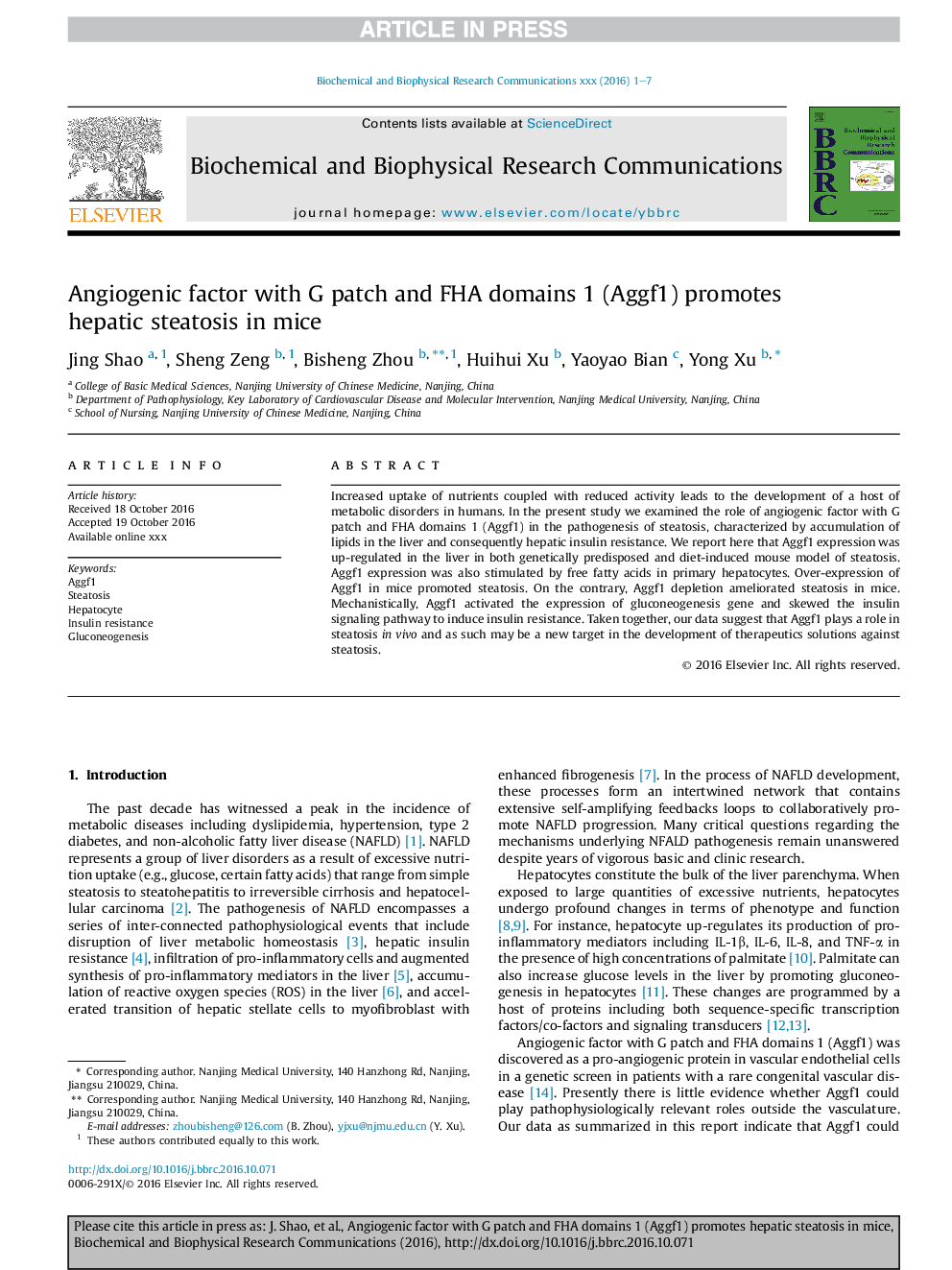| Article ID | Journal | Published Year | Pages | File Type |
|---|---|---|---|---|
| 5505722 | Biochemical and Biophysical Research Communications | 2017 | 7 Pages |
Abstract
Increased uptake of nutrients coupled with reduced activity leads to the development of a host of metabolic disorders in humans. In the present study we examined the role of angiogenic factor with G patch and FHA domains 1 (Aggf1) in the pathogenesis of steatosis, characterized by accumulation of lipids in the liver and consequently hepatic insulin resistance. We report here that Aggf1 expression was up-regulated in the liver in both genetically predisposed and diet-induced mouse model of steatosis. Aggf1 expression was also stimulated by free fatty acids in primary hepatocytes. Over-expression of Aggf1 in mice promoted steatosis. On the contrary, Aggf1 depletion ameliorated steatosis in mice. Mechanistically, Aggf1 activated the expression of gluconeogenesis gene and skewed the insulin signaling pathway to induce insulin resistance. Taken together, our data suggest that Aggf1 plays a role in steatosis in vivo and as such may be a new target in the development of therapeutics solutions against steatosis.
Related Topics
Life Sciences
Biochemistry, Genetics and Molecular Biology
Biochemistry
Authors
Jing Shao, Sheng Zeng, Bisheng Zhou, Huihui Xu, Yaoyao Bian, Yong Xu,
